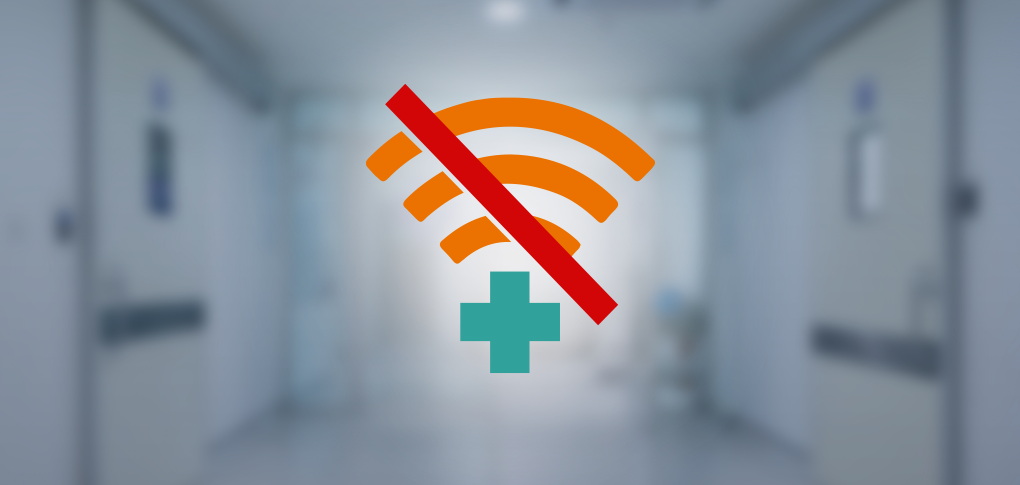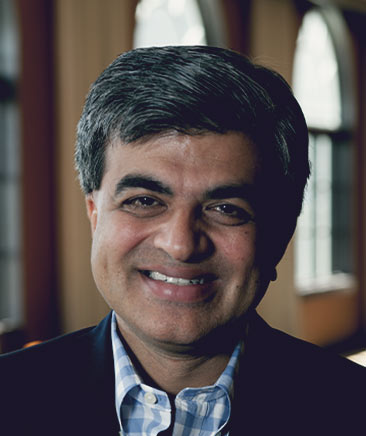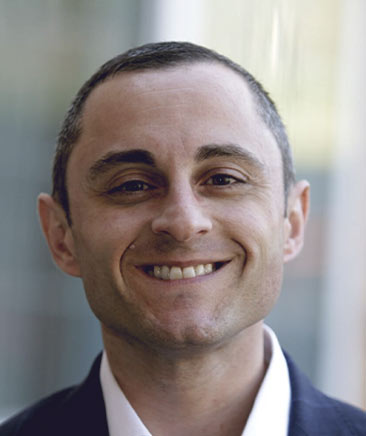People now overwhelmingly view the idea of connected health as a way to build a new foundation for the U.S. healthcare system. It’s a consumer-driven reality for an ecosystem of companies needing to break through silos, align with each other and bridge the gaps in care that too many people face.
Despite a decade of effort to digitally enable the industry, the disconnects in healthcare are striking. When we asked U.S. adults what they think about their overall healthcare experience, they say they’re only half as likely to feel “cared for,” “heard” or “empowered” as their doctors think they feel after their visits (see Figure 1).
Without collective attention to how digital health is reshaping the healthcare system, the industry may be headed down a path that further erodes transparency, consumer trust and equity of care.
FIGURE 1: Adults in the US are half as likely to feel 'cared for' than their doctors think
How healthcare consumers see connected healthcare
Consumers and their doctors overwhelmingly believe connected healthcare will result in better diagnoses, more direct communication between patients and doctors, earlier detection of health issues and improved community health (see Figure 2).
Beyond these benefits, they expect the same conveniences from healthcare they get in other areas of their lives. Consumers demand instant access to information and transparency in pricing, for example. They also are looking for easier appointment scheduling and better ways to communicate with their doctors virtually.
Most importantly, they want greater access to care anytime, anywhere—so they can manage their health, on their time, no matter where they are.
Across the ecosystem, it’s time to recognize some fundamental disconnects that are stalling progress toward a brighter future and plot new, more innovative courses to address them. It’s time to ask, how do we deliver on the promise of connected healthcare?
FIGURE 2: Top benefits of connected healthcare, 2022
What is connected healthcare? Connected healthcare requires sharing the right information with the right people at the right time to allow for holistic, continuous and seamless care from anywhere including:
- Collecting indicators of health as part of everyday life
- Using connected devices such as monitors, apps or implants to collect health data
- Sharing health information and medical history between doctors
- Using virtual services such as telehealth or an online portal to manage referrals, scheduling, insurance or billing
Connected healthcare relies on the principles of transparency, trust and equity of care.
3 fundamental disconnects stalling connected healthcare
As a leader, you may have every intention to deliver on the promise of connected healthcare. But to achieve this, you may need to change your thinking around three fundamental disconnects that put the future of connected healthcare at risk.
Disconnect 1: Companies tend to rely on individual strengths, but connected health requires scale
When it comes to connected healthcare, every company tries to influence the outcomes that matter to them. Most companies will need to partner to gain what they don’t have: clinical expertise, longitudinal data, customer experience know-how or stakeholder trust.
Today, according to our research, eight in ten U.S. adults (79%) say they’d regularly share vital signs such as body temp, blood pressure, heart rate or oxygen levels in a connected healthcare system if they knew this data was being used to improve their health.
To capture this moment, companies must recognize which types of data healthcare consumers are willing to share and who they trust to use it.
Nearly all U.S. adults say they have some level of trust with their doctors when it comes to sharing personal information related to their health (96%, see Figure 3). Fewer Americans trust pharmaceutical companies (63%), health insurance companies (67%) and drug and device manufacturers (66%) on the same level. Trust is weakest for technology, government and social media companies—the same entities most likely to already possess the greatest amount of personal data.
Takeaway: Scaling connected healthcare solutions requires partnerships with others who have clinical expertise, longitudinal data, customer experience know-how or trusted relationships you may be missing.
FIGURE 3: US adults are less likely to share health information outside of a doctor’s care
Disconnect 2: Technology has not fixed what’s broken—instead, it may be driving greater fragmentation
Without greater attention focused on the people using them, technology-led solutions can easily create more problems than they solve. That’s partly why only one-third of healthcare consumers regularly use connected health options now. In our survey, only 38% of U.S. adults say they regularly use online health portals, 29% say they’re consistently using health tracking apps or devices and 23% regularly rely on telehealth options.
Takeaway: Solution providers have a host of decisions to manage beyond technology alone. Increasing volumes of data become burdensome if they aren’t integrated. Biases get magnified. Privacy issues break user trust. The complexities, regulations, clinical considerations and data-related sensitivities unique to healthcare make it different from other markets. Ecosystem players risk fragmenting the system even further if they introduce digital solutions that create more silos or inequities in how people find and receive care.
Disconnect 3: Clinical focus without attention to peoples’ experiences limits progress
Industry leaders often overlook the need for positive consumer experiences in prevention and disease management, but they shouldn’t. Healthcare consumers and their providers, together, agree that several factors are essential to improve in terms of the overall healthcare experience, including greater coordination between doctors and easier access to medical histories.
The largest disconnect between healthcare consumers and providers from our research is around convenient access: 73% of healthcare consumers say anytime, anywhere access is essential to improve moving ahead, yet far fewer primary care providers agree (56%).
Takeaway: Healthcare consumers’ experiences are now essential to understanding and measuring the value of care. Both consumers and their doctors see a range of experiences that are important to improve.
Almost three-quarters (73%) of healthcare consumers value accessing healthcare anytime, anywhere. Only 56% of their doctors agree.
What you can do now: Build for someone, not everyone
Consider this: Building a connected health solution is challenging for any company. The variables make the goal impossibly complex, including people’s preferences for engagement and the specifics of health conditions that may need to be managed. Ultimately, solving for the average user has the potential to leave everyone unsatisfied.
Building for someone, not everyone, is a practical ambition that enables higher odds for tangible impact while showing early, more sustainable wins. With a specific goal in mind, you can:
- Narrow your focus to high-friction problems and how you will demonstrate value. What are your unique opportunities in the evolving market? Consider how you will create value with treatment outcomes and experiences. What is the value story you will need to tell, and how quickly will you need to show value? Will you be able to parse benefits in ways that others can see your value? What will you need to measure?
- Make connections with ecosystem partners that can help you expose your blind spots. Structure your strategic partnerships by defining patient use cases for why you need to come together and what you’ll need to achieve. And weigh options in your leadership and talent pipeline early, too. This step helps you think through lessons learned from earlier high-profile exits out of connected care. Think back to the need for perspectives on the clinical or patient experience, longitudinal data or stakeholder trust. Which types of players have the detailed understanding you may lack? Which players have the agency you desire? Can you aggregate data across the healthcare ecosystem but not act on it? Do you make day-to-day treatment decisions, but only in a small way, limiting your view of the whole patient? Where might your motivations overlap with another organization?
- Understand the readiness and preferences of your chosen population. According to our research, half of the adults in the U.S. now want to be more engaged partners with their doctors on treatment plans. Still, that’s not everyone. A significant number of people in our research do not want anything that feels like “self-serve” healthcare, while others want the digital tools and engagement to become partners with their doctors. Understand the preferences of your chosen population so you can set realistic goals for their engagement.
- Reimagine delivery through an experience lens. First, your teams should be showing how they listen to healthcare consumers on a continuing basis rather than episodically and with an intent to understand their perspectives and needs. This should not be limited to their needs related to your products but broadened to understand the context of their overall health journeys. Most companies are just starting to learn how to integrate insights about the total experience into everyday work.
Next, understand how patient experience factors have been shifting the definition of quality care for your customer segments and how your organization will need to change to deliver the exceptional experiences consumers expect.
- Move healthcare consumers to a better state over time. Design experiences in microsteps that help keep people engaged. Surface problems early so you can adjust and gradually move your community toward a better state over time. People want to know how their participation benefits themselves and the collective good, so plan to communicate incentives or benefits of the data you collect to keep the trust you’ve earned.
About the survey
This survey was conducted online by The Harris Poll on behalf of ZS in September 2021. It represents a balanced sample of 4,006 U.S. adults (18+) and 200 primary care providers. The primary care provider respondents are licensed medical doctors in family practice, general practice or internal medicine.
Add insights to your inbox
We’ll send you content you’ll want to read – and put to use.


















